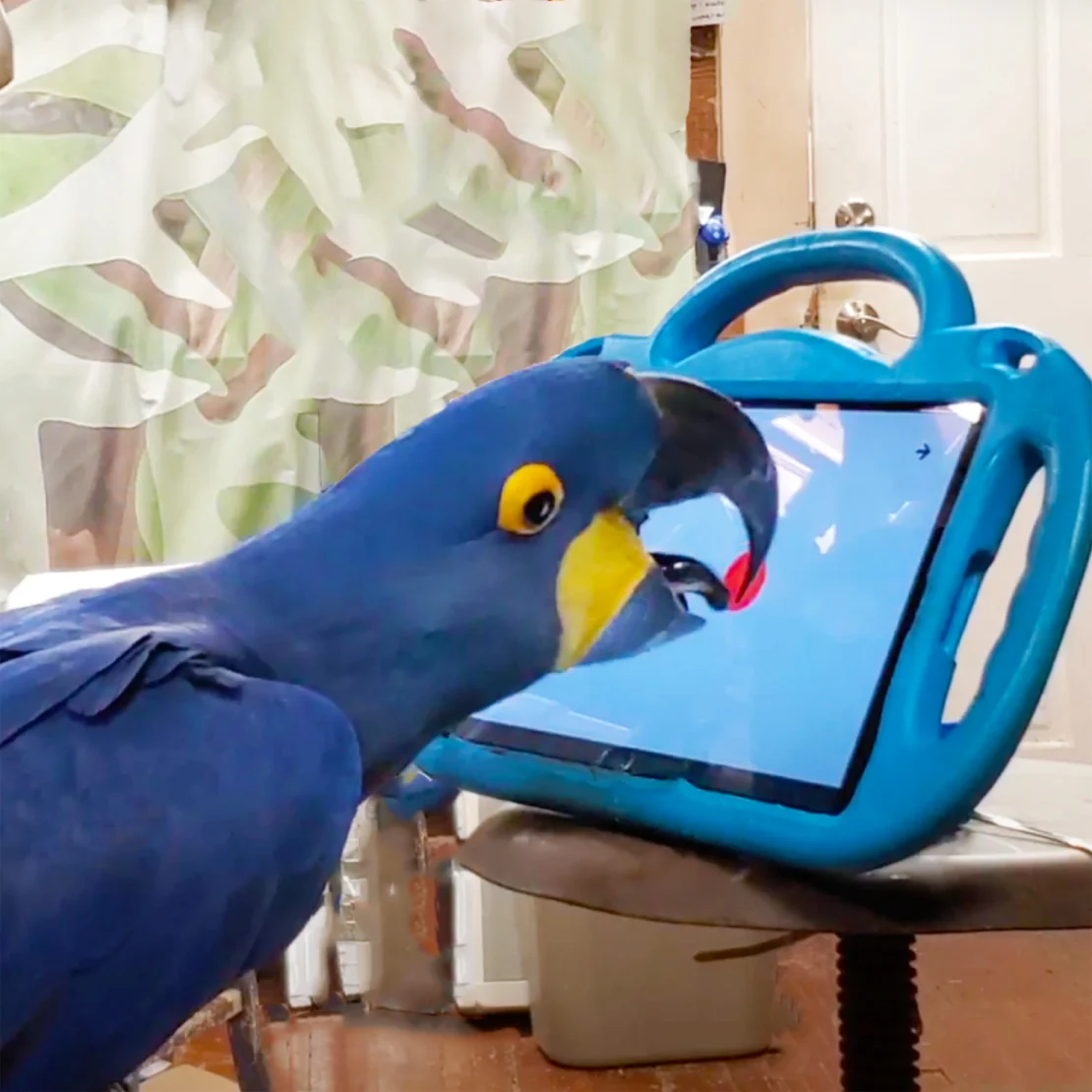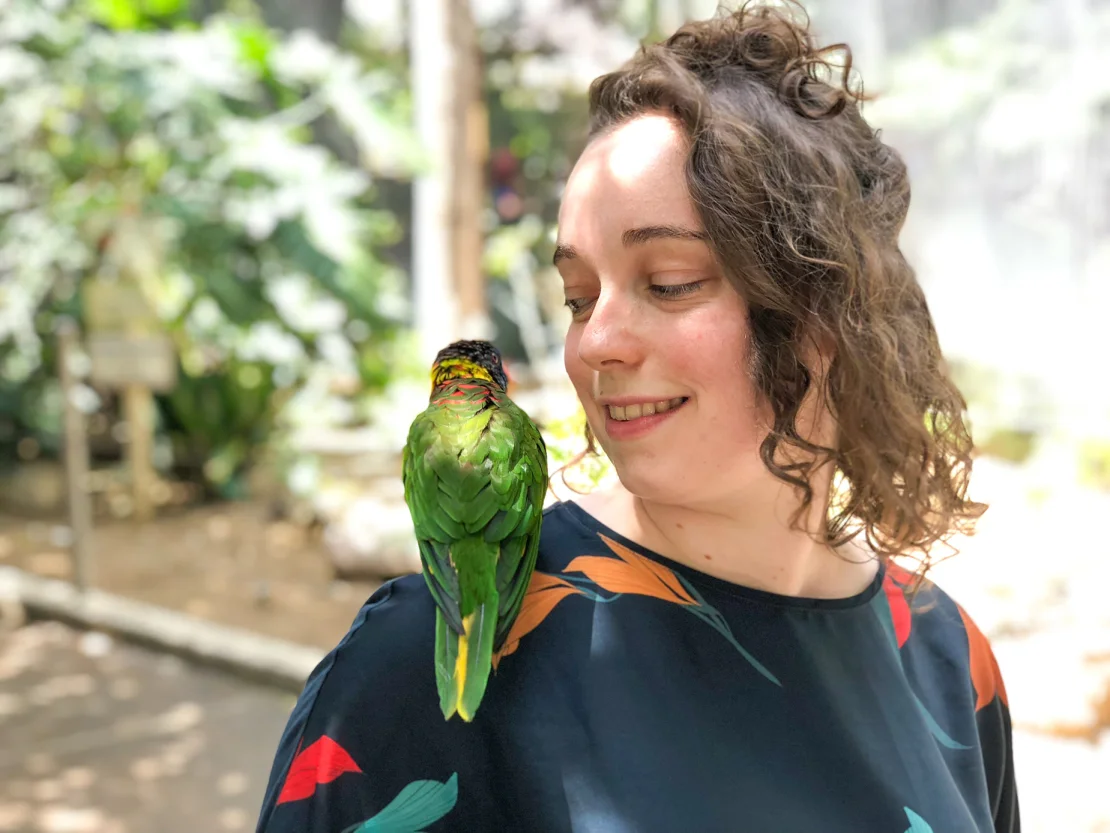Researchers aiming to answer why parrots should use technology for cognitive enrichment set out to answer just how tablets could be improved for optimal use by the intelligent birds, according to a recent March study.
By designing a balloon-popping tablet game and collecting data from 20 pet parrots, the researchers found that birds’ interest in the game indicated mental stimulation could be a potential benefit. However, the critters’ anatomy was an obstacle to interacting with the screens. Each parrot popped virtual balloons by using its tongue and beak, with eyes often very close to the screen. As a result, the bird would have to turn its head or pull back to find the next target.
The findings establish a framework that researchers can use to design bird-friendly tablets, according to the study, which has been peer-reviewed prior to an upcoming May presentation at the ACM (Association of Computing Machinery) CHI conference on Human Factors in Computing Systems, lead author Rébecca Kleinberger said.
“A lot of animals in managed care, in zoos, in homes, they interact with technology on a daily basis. They see the screens that we use. Sometimes they use some as toys,” said Kleinberger, an assistant professor of humanics and voice technology at Northeastern University in Boston. “But there is very little research done on how does technology affect animals’ experiences and how we could potentially create better technologies for animal enrichment.”
Kleinberger is the principal investigator of the INTERACT Animal Lab, a team of researchers who study how technology can enrich the lives of dogs, orcas and birds, according to a news release from Northeastern University. The team released a 2023 study that revealed a group of parrots enjoyed making video calls with other feathered friends.
As long as a caretaker is present, incorporating tablets into a parrot’s schedule could help the clever creature receive more stimulation, according to Irene Pepperberg, an adjunct research professor in the department of psychological and brain sciences at Boston University, who specializes in grey parrots.
“(Wild parrots) spend their days cracking nuts and juicing bark and interacting with all sorts of other birds in the flock. … They have very exciting days full of lots of different things,” said Pepperberg, who was not involved with the new study. “And so what we want to do is to give birds that are in captivity some kind of enrichment.”

Tablets designed with parrots in mind
Seventeen birds completed the study, which involved interacting with a touch screen for no more than 30 minutes a day for three months. Two birds dropped out after a lack of interest in the tablet, while one bird showed signs of stress and anxiety. Caretakers recorded their parrots at home, keeping them on a familiar schedule. The human study participants also played a part in praising and encouraging their creatures to stay engaged, Kleinberger said.
Some parrots were precise when tapping a target on the screen, while others seemed to be more engaged in the interaction with their caretakers.
“The (games) were not made to be used in isolation for the bird to do by (themselves), but really, to consider in the social context of their existing interaction with their caregivers, and how the system can also help reinforce the bond between humans and animals,” Kleinberger said.

One way to improve tablet designs for birds is to use the camera on the device to have a better sense of where the bird is and adjust accordingly, or redesign the layout of a game with the parrot’s proximity to the screen in mind so the bird can see the targets better, Kleinberger said. Another improvement the researchers identified solved the problem of birds tapping one target multiple times very quickly and apparently growing frustrated. One bird showed more interest in playing the game after researchers adjusted the tablets to only account for one tap per 300 milliseconds, she added.
It was not surprising that the birds could learn to follow a circle on a screen because of their higher capacity for intelligence, said Kurt Sladky, a clinical professor of zoological medicine at the University of Wisconsin-Madison’s School of Veterinary Medicine. Sladky was not involved in the new study.
“We see a lot of birds that, for whatever reason, out of boredom, or out of sexual frustration, they pick their feathers. … I think to prevent some of that boredom, I can see (playing games) being useful — they love noises, they love music, they love watching things,” said Sladky, who has feathered patients that have shown interest in watching YouTube videos of other birds.
Mobile games for parrot enrichment
If a parrot owner is looking to introduce tablets into a pet’s schedule, it’s important to remember that the activity should be collaborative between the owner and the bird, Pepperberg said. “But if you’re just leaving it in the cage, for the birds, it’s like leaving your young children with a tablet all day.”
Every bird will have individual likes and dislikes, favoring one game and not another, she added. Pet owners should watch their birds for symptoms of aggression and irritability in using the tablet while also keeping birds on a schedule and not having them play with tablets for long periods.
“When we look at the way technology has changed human lives, in the good and the bad, it’s tremendous how much our lives have changed for the past 100 years,” Kleinberger said. “A lot of our research (looks into) providing ethical, sustainable and meaningful enrichment for animals (with technology) designed for their own well-being … rather than systems that are used to reduce the interaction that we as humans need to provide them.”


